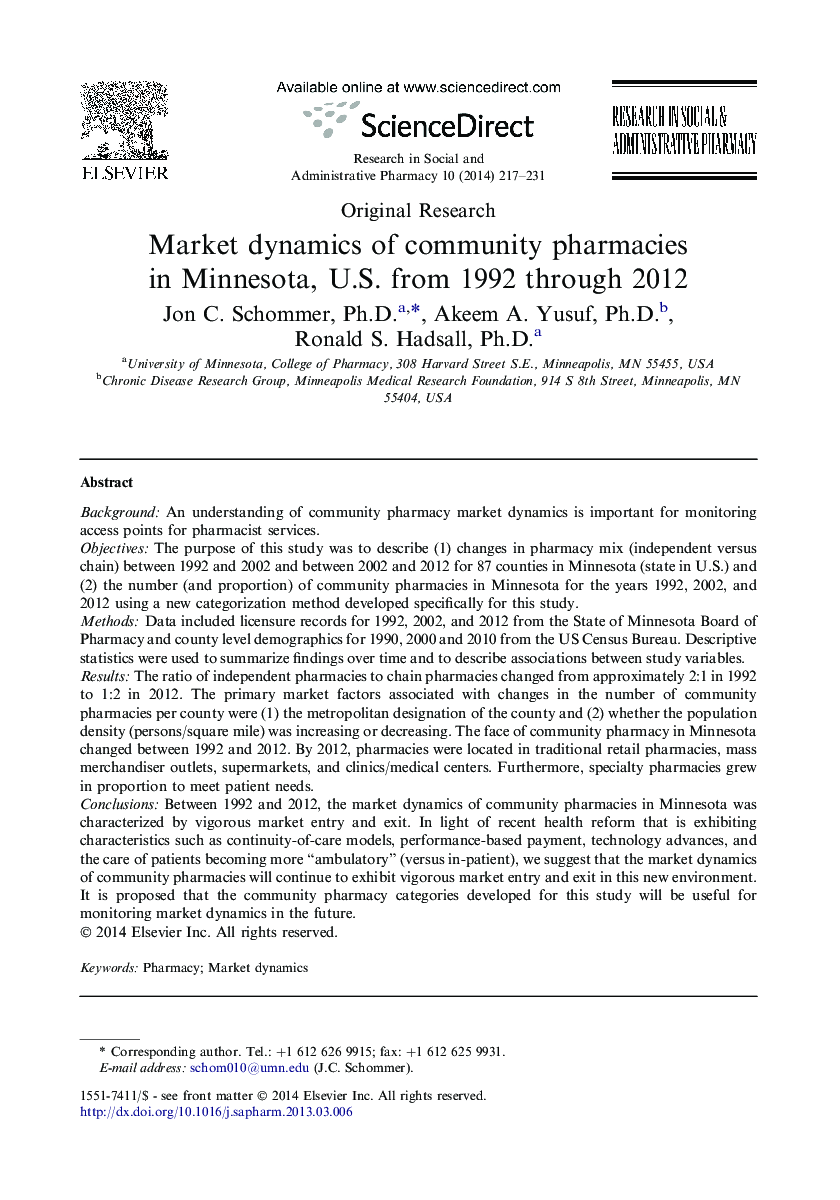| Article ID | Journal | Published Year | Pages | File Type |
|---|---|---|---|---|
| 2508719 | Research in Social and Administrative Pharmacy | 2014 | 15 Pages |
BackgroundAn understanding of community pharmacy market dynamics is important for monitoring access points for pharmacist services.ObjectivesThe purpose of this study was to describe (1) changes in pharmacy mix (independent versus chain) between 1992 and 2002 and between 2002 and 2012 for 87 counties in Minnesota (state in U.S.) and (2) the number (and proportion) of community pharmacies in Minnesota for the years 1992, 2002, and 2012 using a new categorization method developed specifically for this study.MethodsData included licensure records for 1992, 2002, and 2012 from the State of Minnesota Board of Pharmacy and county level demographics for 1990, 2000 and 2010 from the US Census Bureau. Descriptive statistics were used to summarize findings over time and to describe associations between study variables.ResultsThe ratio of independent pharmacies to chain pharmacies changed from approximately 2:1 in 1992 to 1:2 in 2012. The primary market factors associated with changes in the number of community pharmacies per county were (1) the metropolitan designation of the county and (2) whether the population density (persons/square mile) was increasing or decreasing. The face of community pharmacy in Minnesota changed between 1992 and 2012. By 2012, pharmacies were located in traditional retail pharmacies, mass merchandiser outlets, supermarkets, and clinics/medical centers. Furthermore, specialty pharmacies grew in proportion to meet patient needs.ConclusionsBetween 1992 and 2012, the market dynamics of community pharmacies in Minnesota was characterized by vigorous market entry and exit. In light of recent health reform that is exhibiting characteristics such as continuity-of-care models, performance-based payment, technology advances, and the care of patients becoming more “ambulatory” (versus in-patient), we suggest that the market dynamics of community pharmacies will continue to exhibit vigorous market entry and exit in this new environment. It is proposed that the community pharmacy categories developed for this study will be useful for monitoring market dynamics in the future.
